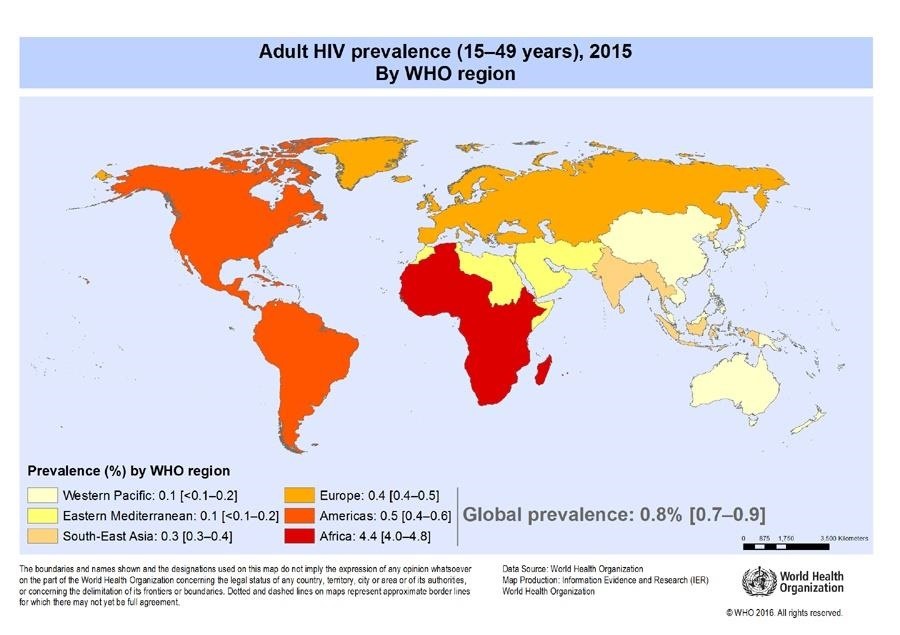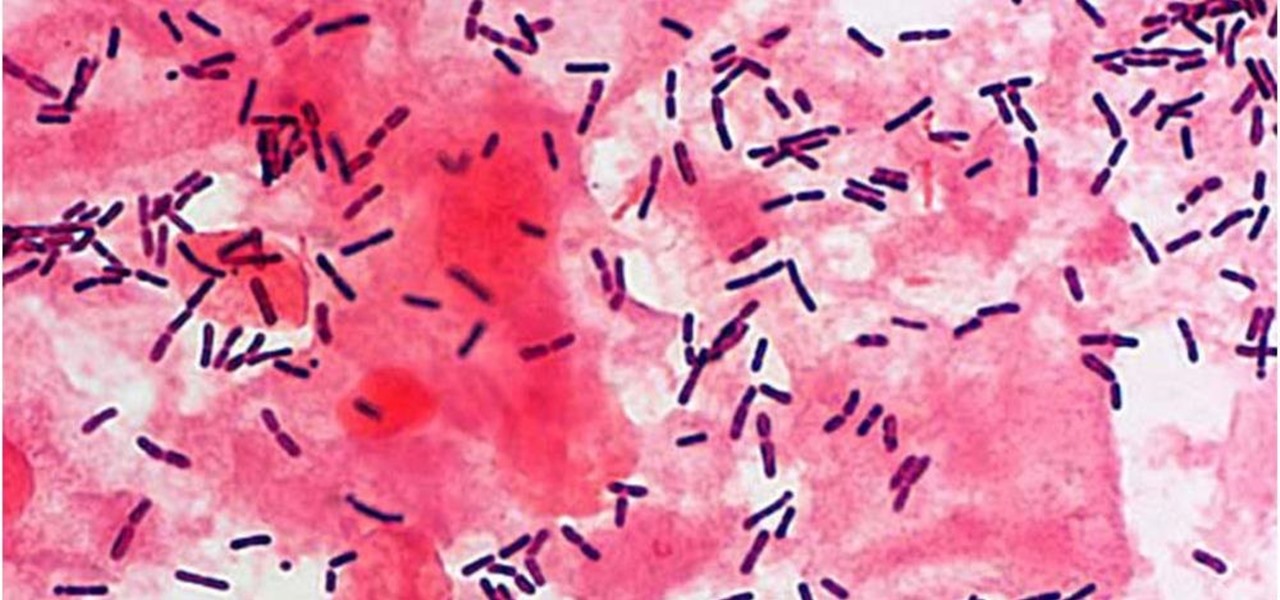The presence of certain bacteria can indicate whether the vaginal tract is healthy or not. It could also impact the likelihood of acquiring certain sexually transmitted diseases, like HIV, a new study suggests.
Lactobacillus is the type of bacteria found most commonly and most abundantly in the vaginal tract of pre-menopausal women in the US. It has been shown to provide protection against pathogenic organisms by producing lactic acid, hydrogen peroxide, and bacteriocin. These compounds can prevent disease-causing bacteria from sticking to epithelia cells, slow their growth, or even kill them.
Now, a new report published in Immunity has shown that women in South Africa have several different types of vaginal bacteria, and those women with specific vaginal bacterial communities acquired HIV at higher rates than other women. That could mean that certain bacterial communities could be protective against the sexually transmitted infection.
As of 2015, an estimated 36.7 million people were infected with HIV worldwide. A much greater percentage of the population of Africa is infected than in any other country.

HIV can spread by contact with body fluids—blood, semen, rectal fluids, vaginal fluids, and breast milk from an infected individual. That means that sexual activities, drugs administered with a used syringe, and blood transfusions can all pass the HIV virus.
Despite treatments aimed at slowing the growth of HIV in the body, over 1 million people worldwide died from HIV infections in 2015.
How HIV Infections Take Hold
The human immunodeficiency virus (HIV) is a special category of viruses called retroviruses, which store their genetic material as RNA and then copy it into DNA (the genetic material of our cells). In our bodies, DNA is copied into RNA and those RNA strands are used to produce proteins.
HIV and other retroviruses go backwards: They pack a special enzyme called reverse transcriptase that reads the RNA code and turns it into DNA strands. Those strands are then incorporated into the the genetic material of the host cell, where they can live on until the cell dies. Once the virus is in the DNA of a person's cell, it uses the cell's own machinery to make copies of the virus. That cell may die from the infection, but it could also live on as a reservoir of the virus, continually reinfecting other cells in the body or hiding away for years before making someone ill.
In humans, HIV infects cells of the immune system, called CD4 lymphocytes. As the virus replicates, many of the infected cells die, greatly decreasing the function of the infected person's immune system and making it harder to fight off even weak diseases that healthy humans aren't affected by.
People infected with HIV may experience flu-like symptoms of fever, chill, rash, muscle aches, sore throat, swollen lymph nodes, fatigue, mouth ulcers, and night sweats. The only way to determine if someone is infected with HIV is with a blood test.

Usually a combination of several drugs, collectively called anti-retroviral drugs, are used to treat infections with HIV. The drugs act on different parts of the virus' replication cycle. For example, some inhibit fusion to host immune cells, some inhibit entry of the virus into the cell, and other drugs inhibit the reverse transcriptase needed for viral replication.
According to The Mercer University School of Medicine's HIV tutorial, where in the body an HIV infection takes hold depends on both the number of virus particles and the number of cells with CD4 receptors on them at the site of contact with the virus.
But scientists have observed that some people seem to be less vulnerable to infection with the HIV virus. Douglas Kwon and colleagues from the Ragon Institute and the MGH Division of Infectious Diseases, have released a report that sheds some light on one possible reason.
The Role of Vaginal Bacteria
Now, it appears that the bacteria making up the vaginal microbiome may also have a role in whether a woman becomes infected with the HIV virus. The vaginal microbiome is the community of bacteria that inhabit the vaginal tract.
The research team designed a study to determine whether the types of bacteria present in the vaginal tract affected the risk of HIV infection.
The researchers studied 236 18-to-23 year old women in Umlazi, South Africa. Participants had their blood drawn for HIV virus testing periodically and had a pelvic exam every three months. During the pelvic exam, swabs were taken from different parts of the genital tract and the bacteria found were characterized in the laboratory.

The vaginal tract bacteria of 10% of women were dominated by Lactobacillus crispatus, and 32% were dominated by Lactobacillus iners. The rest of the women had diverse microbiomes consisting of several types of bacteria, where lactobacilli was sparse. The samples were either dominated by Gardnerella vaginalis or several bacteria such as Prevotella, Gardnerella, Shuttleworthia, Sneathia, and Megasphaera.
Even though the women received intensive counseling about HIV infection and transmission, 31 women acquired HIV during the study, while 205 did not.
The results showed the women with diverse vaginal tract microbiomes had a significant increase in HIV infections compared to women with whose vaginal samples contained mostly L. crispatus . None of the women whose predominant vaginal microbiome contained L. crispatus became infected with HIV, but 32-39% of the women with diverse bacterial communities that were low in lactobacilli were infected.
Types of bacteria also correlated with genital inflammation, measured by CD4 cells. L. crispatus and L. iners were associated with reduced inflammation and CD4 T cell numbers are higher in women with high-risk bacteria. Higher CD4 numbers could indicate that more cells were available for the HIV to attach to and infect.
The contents of the vaginal microbiome appeared to be a risk factor for HIV infection and the authors said their findings "underscore the importance of developing more effective regimens that achieve a sustained alteration of the genital microbiome since this could potentially reduce HIV acquisition."
From what we know about the vaginal microbiome, it may be possible to increase the number of lactobacilli that live there. In the future, perhaps it will be possible to develop supplements to help women ward off infections, though that's not in the pipeline yet.
Just updated your iPhone? You'll find new emoji, enhanced security, podcast transcripts, Apple Cash virtual numbers, and other useful features. There are even new additions hidden within Safari. Find out what's new and changed on your iPhone with the iOS 17.4 update.




























Be the First to Comment
Share Your Thoughts